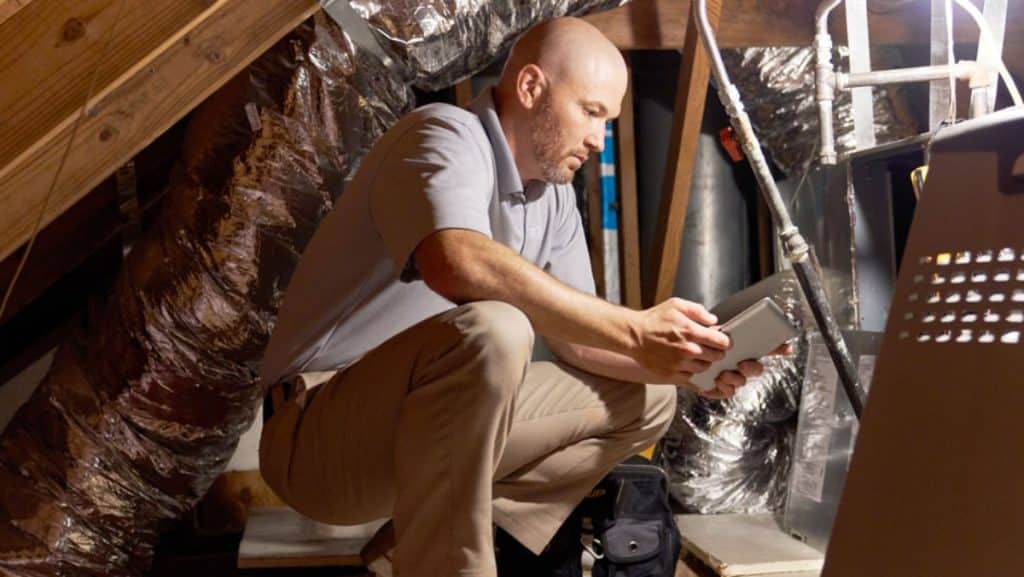When considering installing a furnace, homeowners often focus on comfort and reliability. However, a key factor that shouldn’t be overlooked is how a new furnace impacts your home’s energy bills. A properly installed furnace can lead to substantial energy savings, while an inefficient one can cause monthly costs to skyrocket. This guide will explore seven key ways furnace system installation affects your energy expenses.
1. Energy Efficiency Rating
One of the most important aspects of furnace installation in Baltimore, MD, is the energy efficiency rating of the unit you choose. Furnaces are rated by their Annual Fuel Utilization Efficiency (AFUE). The higher the AFUE rating, the more efficiently the furnace converts fuel into heat. Modern furnaces often have AFUE ratings of 90% or more, meaning they can convert 90% of the fuel they use into heat. By upgrading from an older, less efficient model, you can significantly lower your energy bills.
2. Proper Sizing of the Furnace
The size of the furnace relative to your home is critical. A furnace that is too large will cycle on and off frequently, which wastes energy. On the other hand, a furnace that is too small will run continuously, trying to meet your home’s heating demands. Both scenarios lead to higher energy bills and increased wear on the unit. Proper installation includes accurately calculating your home’s heating requirements to select the right size.
3. Ductwork Installation and Sealing
The condition of your home’s ductwork plays a significant role in energy efficiency during the installation. Leaky ducts can lose up to 30% of the heated air before it even reaches your living spaces. A professional installation will include an inspection of the ductwork to ensure it’s properly sealed. Well-sealed ducts ensure that all the heat generated by the furnace is efficiently distributed throughout your home, lowering energy bills.
4. Thermostat Compatibility
Installing a modern furnace often involves upgrading to a compatible thermostat, like a smart or programmable one. These advanced thermostats allow you to schedule heating cycles based on your daily routine, ensuring that your furnace only runs when necessary. For example, you can set the thermostat to lower the temperature while you’re at work and raise it when you’re home, significantly reducing energy use without sacrificing comfort.
5. Installation Quality and Techniques
The way your furnace is installed can have a lasting impact on energy bills. Even the most energy-efficient furnace will underperform if it is not installed correctly. Poor installation can lead to air leaks, improper venting, and reduced efficiency. Hiring a qualified HVAC technician ensures that the furnace is installed following industry standards, maximizing its energy-saving potential. Correct installation techniques will not only reduce your energy bills but also extend the life of your furnace.
6. Impact of Zoning Systems
If you opt for a zoning system during the installation, this can have a substantial impact on your energy consumption. Zoning allows you to heat specific areas of your home, reducing the need to heat unused spaces. For instance, you can lower the temperature in unoccupied rooms while maintaining comfort in frequently used areas. By minimizing unnecessary heating, zoning systems can result in significant energy savings and lower utility bills.
7. Increased Lifespan and Reduced Maintenance Costs
Proper installation ensures that your system runs efficiently from the start, reducing the likelihood of frequent breakdowns and repairs. An efficiently running furnace experiences less wear and tear, which helps extend its lifespan. When your furnace operates without strain, it requires fewer repairs and less frequent maintenance, which indirectly reduces your energy bills by avoiding costly emergency fixes or inefficient operation due to poor upkeep.
The installation can profoundly impact your home’s energy bills. From the furnace’s energy efficiency rating to proper sizing and ductwork, every detail counts when it comes to maximizing energy savings. Whether you’re upgrading an old system or installing a new one, ensuring that your furnace is installed properly will help keep your energy bills in check for years to come.
If you’re considering a new furnace installation and want to maximize your home’s energy efficiency, contact the team of HVAC professionals at Supreme Service Today at (410) 788-1114.
FAQs
1: How often should I replace my furnace to maintain energy efficiency?
Typically, furnaces should be replaced every 15 to 20 years. Regular maintenance can extend their lifespan, but upgrading to a more efficient model can significantly lower energy bills.
2: What maintenance is needed after furnace installation?
After installation, it’s essential to schedule regular maintenance, including annual inspections, filter replacements, and duct cleaning, to ensure your system runs efficiently and to avoid unexpected repairs.
